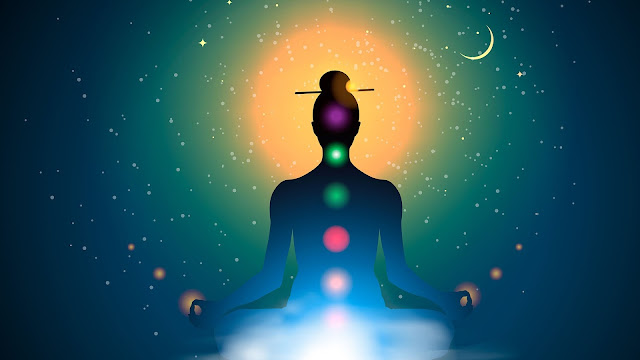"Ekadashi" is a Sanskrit word, which means 'the eleventh'. It refers to the eleventh day of a fortnight belonging to a lunar month. There are two fortnights in a lunar month—the bright and the dark. So, Ekadashi occurs twice in a month, in the bright fortnight and the dark fortnight. The special feature of Ekadashi, as most people know it, is a fast, abstinence from diet. This is how it is usually understood. 'We do not eat on Ekadasi', is what people understand. In this country (India) it has become a routine to be abstemious, if not observe a complete fast on this day. The significance of this particular observance is not merely constituted of a fast, physically, though it is also an essential element; it has other deeper aspects. In fact, the fast is only a practical expression and a symbol of something else that we are expected to do, which is of special significance to our personality.
In the Mandala punyakala, three ekadashis come and out of these three, Thriprayar Ekadashi and Guruvayoor Ekadashi are observed with great reverence. But these days observation of Ekadashi confines to simply following certain rituals without understanding its significance. This blog tries to throw some light on how a conscious observation of Ekadashi Vrata helps to bring health and vibrance to the system and helps a person in his spiritual journey.
Those who know astronomy as something which tells about the inter-relation of the planetary system, the stellar world, would be aware that we form a part of this planetary or solar system. Astronomy studies the movements of planets and stars, and astrology the effects they produce on the contents of the system. The Ekadasi observance is an astrological phenomenon and it is observed due to this relation we have with some of the planets in the system. The entire personality of ours is tremendously influenced by the movement of planets. There is no use imagining that the planets are above our heads. They are everywhere. There is a relative movement of planets among which the earth is one. Each planet tells upon our system and we cannot get rid of the influence of theirs as long as we are in this planet, of which we are a part.
The sun is said to influence the centre of our personality; hence the sun is called 'Atmakaraka'. He is the soul-influencer of the human body. In the Rig-veda, the sun is identified with the soul of the universe as well as the soul of the individual. The different limbs of our body and different parts of our system are supposed to be influenced by different planets. The sun is capable of influencing the entire being. He is, thus, the Atmakaraka. Karaka is doer, manipulator, director.
The moon is supposed to influence the mind. The mind is also made up of material substance, very subtle, gathered through senses and memory. Ekadasi is particularly relevant to this relation of moon and mind.
How, is Ekadasi related to the movement of moon and mind?
We have certain centres called 'Chakras' in the body. The Chakras are nothing but energy-centres which whirl in some direction as water whirls in a river. Chakra is a wheel or circular motion. They move in a spiral shape. They are not physical; but psycho-physical and psychological. These Chakras are neither in the mind nor in the body; they are in the astral body. The moon's influence physically on the body has an influence on the Chakras, which tells upon the mind ultimately. The mind moves through these Chakras. The passage of the mind is through these Chakras, up and down. When this operation takes place consciously, it is called Yoga; When done unconsciously by the mind, it is just influence. When the moon waxes or wanes, the mind is vehemently influenced. So people who are not normal in their minds become very affected on the full-moon and new-moon days.
Another important aspect is the seat of the mind which is also twofold. The mind has several abodes or centres of energy called Chakras, of which two are its own. The seats of the mind in this personality of ours are:
1. the subtle spot in the astral body corresponding to the centre of the two eye-brows, in waking,called Ajna Chakra and
2. the heart, in the state of deep sleep,called Anahata Chakra
In both these centres, the mind feels at home and is at ease, because it is nearer to itself. In other centres it is extrovert. In the Ajna and the Anahata Chakras it finds itself at home. In the two fortnights, in its movement, it finds itself at the Ajna Chakra and the Anahata Chakra on the eleventh day ie. on Ekadashi day. Since these two Chakras are its own abode, the mind is at home here, i.e., it gets concentrated and collected easily. This has been the experience given out by our ancients, and this is taken advantage of by Sadhakas. You are capable of deep meditation when the mind is naturally in its home. So, the Ekadasi day in both fortnights is the occasion when the mind finds itself in its place—in the bright fortnight in the Ajna Chakra, and in dark fortnight in the Anahata Chakra. Seekers and Yogis take advantage of these two days and try to practise deep meditation. This helps sadhakas to elevate themselves in their spiritual seeking.
Fasting on Ekadashi:
The reason for fasting on Ekadashi is because the planet itself is in a certain state on that day, so if we keep our body light and available, our awareness will turn inward. The possibility of opening the door within is more on that day. If you have a full stomach, and you are unaware and dull, you will not notice it. So to stay alert and also to purify the body, you go without food on that day – you ate dinner the previous day and the next thing you eat is dinner on Ekadashi.
If you are unable to go without food – because your activity levels are such and you do not have the sadhana to support you – you can go on 'phalahara' or fruit diet, which is light on the stomach so that your inner doors will open. Forceful denial of food is not the point. The point is to make everything into a conscious process.Fast is supposed to cause buoyancy of feeling and not fatigue.
Apart from all these, there is a necessity to give the physiological system some rest once a while. It may be over-worked due to a little over-eating or indiscrimination in diet. These irregularities unconsciously done during the fourteen days get rectified in one day. Thus the observance of Ekadasi has many advantages—physical, astral, spiritual—and because this day has connection with the relation of the mind with its abode together with the moon, you feel mysteriously helped in your meditation and contemplation,—mysteriously because you cannot know this outwardly,but you can feel this for yourself by observing it.






No comments:
Post a Comment